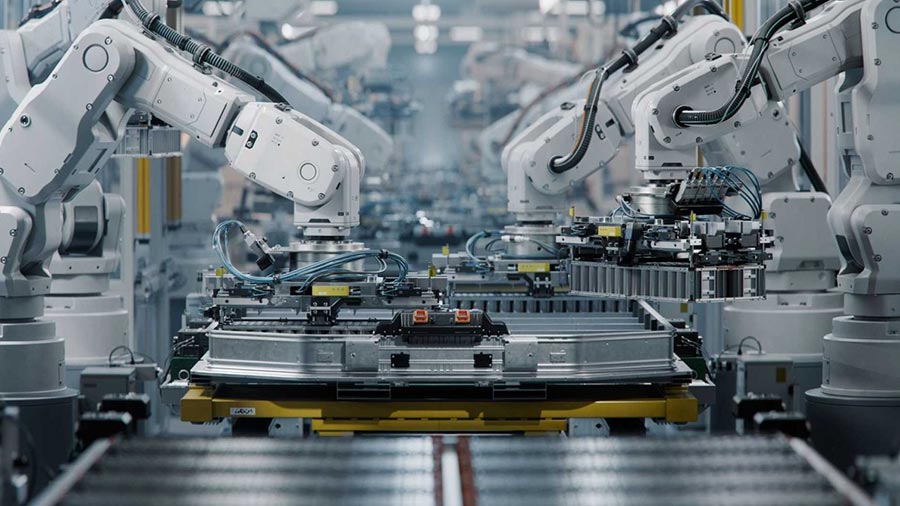China’s Ex-Expats: Emerging Asia Beckons
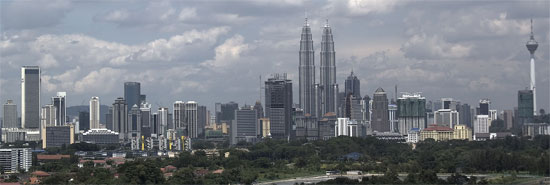
An examination of 20 alternative Asian cities for expats leaving China
Op-Ed Commentary: Chris Devonshire-Ellis
Nov. 18 – It seems likely that this coming Christmas will see the end of many China expatriates’ careers in China. Nervous of the recently introduced, and fairly high, mandatory social welfare contributions for foreigners, employers are cutting back on non-essential foreigners, and localizing these positions. Essential expats will remain, but those on the fringes and not able to offer much in terms of specific talent face culling. As China moves up the value chain, it simply does not need to have foreigners with little actual skills to offer. Returning Chinese can fill lower-middle management, and increasingly senior managerial roles, and the China expat is being squeezed out.
The impact on this will be felt by those that have recently graduated, or are aged to about 35 and haven’t yet found their way high enough up the corporate ladder. There are of course exceptions, but many in this age bracket will find their China career options coming to a close. Contracts will not be renewed, and many will face termination. The lucky will be relocated elsewhere within their existing employers. However, the future externally also looks rather bleak. Both the United States and European economies are in the doldrums, and unemployment is rising. Returning back may also be something of a waste – all that China experience down the drain. Here, employees need to make a decision – remain an expat, and continue to add to the adventure, or return home and take the chances of reabsorbing back into mainstream society. It’s not always easy, and especially for expats who have been overseas for five years or more – friends have moved on, and recent experiences are not compatible. Potential employers back home are not likely to be very interested in what you did in China, it’s just not relevant. That rejection is the downside of returning expats. All that experience has to be suppressed in order to meld back in.
However, if returning home isn’t either a viable or interesting option, the good news is that there are plenty of other opportunities elsewhere in Asia. In this article we give some snapshots of regional Asian locations that may be worth considering. For those who may be looking for alternative Asian employment destinations, these are the emerging Asia alternatives.
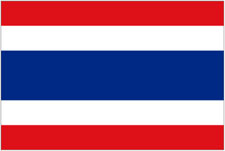 Bangkok, Thailand
Bangkok, Thailand
City population: 5,104,476
Main industries: Tourism, jewelry trading, electronics, garments, computers, and logistics
National GDP (IMF, 2010, PPP): I$589.01 billion
National GDP Rank (IMF, 2010, PPP): 24/183
Mercer Quality of Living Rankings (2010): 118/221
Mercer Global Eco-City Rankings (2010): 191/221
Foreign Policy Global Cities Index (2010): 36/65
Xpatular.com’s Cost of Living Index (Oct. 2011): 180/300
Individual income tax rates: 0 percent – 37 percent
Local social expat web site: Expat Arrivals – Bangkok
Business reading: Bangkok Post
Why it’s cool: A major Asian logistics hub, Bangkok is both a huge air and sea port but also crucial for getting product across land to Asia’s internal cities, together with an excellent tourism industry.
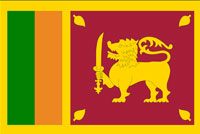 Colombo, Sri Lanka
Colombo, Sri Lanka
City population: 648,034
Main industries: Gem cutting, food and tobacco processing, metal fabrication, engineering, manufacturing of chemicals, textiles, glass, cement, leather
National GDP (IMF, 2010, PPP): I$105.46 billion
National GDP Rank (IMF, 2010, PPP): 66/183
Mercer Quality of Living Rankings (2010): 147/221
Mercer Global Eco-City Rankings (2010): 131/221
Foreign Policy Global Cities Index (2010): Unranked
Xpatular.com’s Cost of Living Index (Oct. 2011): 186/300
Individual income tax rates: 4 percent – 24 percent
Local social expat web site: International Expat Association of Colombo
Business reading: The Colombo Times
Why it’s cool: Beautiful scenery, and now recovering and being rebuilt after a 30-year civil war, infrastructure improvements and city and port makeovers continue apace.
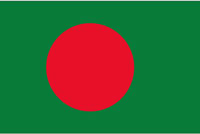 Dhaka, Bangladesh
Dhaka, Bangladesh
City population: 10,356,500
Main industries: Leather footwear, textiles, IT, tourism, service, banking and finance
National GDP (IMF, 2010, PPP): I$260.54 billion
National GDP Rank (IMF, 2010, PPP): 43/183
Mercer Quality of Living Rankings (2010): 206/221
Mercer Global Eco-City Rankings (2010): 220/221
Foreign Policy Global Cities Index (2010): 64/65
Xpatular.com’s Cost of Living Index (Oct. 2011): 292/300
Individual income tax rates: 0 percent – 25 percent
Local social expat web site: InterNations Dhaka Expat Community
Business reading: The Daily Star
Why it’s cool: Home to a lot of Asia’s textile industry and sandwiched between China and India, Bangladesh is increasing its exports exponentially.
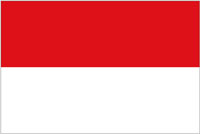 Jakarta, Indonesia
Jakarta, Indonesia
City population: 8,540,121
Main industries: Financial services, trade, tourism, electronics, chemicals, automotive, mechanical engineering and biomedical sciences
National GDP (IMF, 2010, PPP): I$1.03 trillion
National GDP Rank (IMF, 2010, PPP): 15/183
Mercer Quality of Living Rankings (2010): 141/221
Mercer Global Eco-City Rankings (2010): 173/221
Foreign Policy Global Cities Index (2010): 53/65
Xpatular.com’s Cost of Living Index (Oct. 2011): 99/300
Individual income tax rates: 5 percent – 30 percent
Local social expat web site: Living in Indonesia
Business reading: The Jakarta Post
Why it’s cool: The trade hub for Java, and an Indonesian population that is both a huge market in its own right and a competitor to China manufacturing.
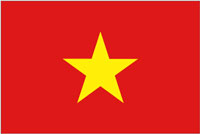 Hanoi, Vietnam
Hanoi, Vietnam
City population: 1,431,270
Main industries: Agriculture, tourism, trade, finance and banking
National GDP (IMF, 2010, PPP): I$277.39 billion
National GDP Rank (IMF, 2010, PPP): 40/183
Mercer Quality of Living Rankings (2010): 151/221
Mercer Global Eco-City Rankings (2010): 137/221
Foreign Policy Global Cities Index (2010): Unranked
Xpatular.com’s Cost of Living Index (Oct. 2011): 254/300
Individual income tax rates: 5 percent – 35 percent
Local social expat web site: Expat Arrivals – Hanoi
Business reading: The Hanoi Times; Vietnam Briefing
Why it’s cool: Sitting on the main intra-Asian rail and logistics line that connects China all the way through to Singapore, Hanoi is a regional business hub for Indochina.
 Ho Chi Minh City, Vietnam
Ho Chi Minh City, Vietnam
City population: 3,467,331
Main industries: Mining, seafood processing, agriculture, tourism, finance and banking, construction, electronics, and high-tech industries
National GDP (IMF, 2010, PPP): I$277.39 billion
National GDP Rank (IMF, 2010, PPP): 40/183
Mercer Quality of Living Rankings (2010): 150/221
Mercer Global Eco-City Rankings (2010): 154/221
Foreign Policy Global Cities Index (2010): 61/65
Xpatular.com’s Cost of Living Index (Oct. 2011): 271/300
Individual income tax rates: 5 percent – 35 percent
Local social expat web site: So Saigon
Business reading: Saigon Today; Vietnam Briefing
Why it’s cool: Access to deep water ports for export, and through to Cambodia make HCMC more an export-driven economy than Hanoi, while retaining its French and Southeast Asian culture.
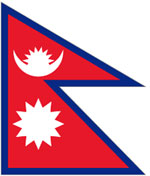 Kathmandu, Nepal
Kathmandu, Nepal
City population: 1,442,271
Main industries: Tourism, foreign trade, agriculture, services sector, and handicrafts
National GDP (IMF, 2010, PPP): I$35.79 billion
National GDP Rank (IMF, 2010, PPP): 97/183
Mercer Quality of Living Rankings (2010): Unranked
Mercer Global Eco-City Rankings (2010): Unranked
Foreign Policy Global Cities Index (2010): Unranked
Xpatular.com’s Cost of Living Index (Oct. 2011): 289/300
Individual income tax rates: 1 percent – 40 percent
Local social expat web site: Visit Nepal
Business reading: The Himalayan Times
Why it’s cool: A Himalayan trade center, shortly to be connected to China via rail through Tibet, while remaining a much loved tourist destination.
 Kolkata, India
Kolkata, India
City population: 4,631,392
Main industries: Information technology, retail, hospitality, electronics, food processing, mining, heavy engineering, and textiles
National GDP (IMF, 2010, PPP): I$4.06 trillion
National GDP Rank (IMF, 2010, PPP): 4/183
Mercer Quality of Living Rankings (2010): 145/221
Mercer Global Eco-City Rankings (2010): 218/221
Foreign Policy Global Cities Index (2010): 63/65
Xpatular.com’s Cost of Living Index (Oct. 2011): 182/300
Individual income tax rates: 0 percent – 30 percent
Local social expat web site: Kolkata Fun
Business reading: The Calcutta Telegraph; India Briefing
Why it’s cool: The largest Chinese population in India, and looking to reestablish itself as the major port servicing East India, Bangladesh and Burma trade.
 Kuala Lumpur, Malaysia
Kuala Lumpur, Malaysia
City population: 1,453,975
Main industries: Chemicals, textiles, food and tobacco processing, tourism, and trade
National GDP (IMF, 2010, PPP): I$416.54 billion
National GDP Rank (IMF, 2010, PPP): 29/183
Mercer Quality of Living Rankings (2010): 74/221
Mercer Global Eco-City Rankings (2010): 96/221
Foreign Policy Global Cities Index (2010): 48/221
Xpatular.com’s Cost of Living Index (Oct. 2011): 202/300
Individual income tax rates: 0 percent – 26 percent
Local social expat web site: Expatriate Malaysia
Business reading: New Straits Times
Why it’s cool: Asia’s Islamic center, a significant manufacturing base, and a Southeast Asian business hub mixed with a tolerant attitude make KL one of Asia’s great cities.
 Manila, Philippines
Manila, Philippines
City population: 10,444,527
Main industries: Chemicals, textiles, food and tobacco processing, furniture, light manufacturing, tourism, and trade
National GDP (IMF, 2010, PPP): I$368.55 billion
National GDP Rank (IMF, 2010, PPP): 32/183
Mercer Quality of Living Rankings (2010): 128/221
Mercer Global Eco-City Rankings (2010): 172/221
Foreign Policy Global Cities Index (2010): 51/65
Xpatular.com’s Cost of Living Index (Oct. 2011): 153/300
Individual income tax rates: 5 percent – 32 percent+
Local social expat web site: Expat in the Philippines
Business reading: The Manila Times
Why it’s cool: Textiles, furniture, light manufacturing and even film production make this one of Asia’s most hectic destinations.
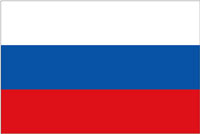 Moscow, Russia
Moscow, Russia
City population: 12,691,836
Main industries: Engineering, diamond polishing, finance, information technology, healthcare, and tourism
National GDP (IMF, 2010, PPP): I$2.23 trillion
National GDP Rank (IMF, 2010, PPP): 6/183
Mercer Quality of Living Rankings (2010): 170/221
Mercer Global Eco-City Rankings (2010): 203/221
Foreign Policy Global Cities Index (2010): 25/65
Xpatular.com’s Cost of Living Index (Oct. 2011): 9/300
Individual income tax rates: 13 percent – 35 percent
Local social expat web site: The Moscow Expat Site
Business reading: The Moscow News; Russia Briefing
Why it’s cool: Ok, we know it’s not strictly in Asia, but if you’ve been based in Beijing it’s a fair call. Russia is about to join the WTO and is the largest single country not yet a member. The trade opportunities with both China, India, Western Europe and the United States are likely to explode.
 Mumbai, India
Mumbai, India
City population: 12,691,836
Main industries: Engineering, diamond polishing, finance, information technology, healthcare, and tourism
National GDP (IMF, 2010, PPP): I$4.06 trillion
National GDP Rank (IMF, 2010, PPP): 4/183
Mercer Quality of Living Rankings (2010): 144/221
Mercer Global Eco-City Rankings (2010): 215/221
Foreign Policy Global Cities Index (2010): 46/221
Xpatular.com’s Cost of Living Index (Oct. 2011): 139/300
Individual income tax rates: 0 percent – 30 percent
Local social expat web site: Bombay Expats
Business reading: Times of India; India Briefing
Why it’s cool: India’s financial center and home to the country’s wealthiest. Looking out onto the Middle East and Africa mean Mumbai’s time as a world center for trade is being re-engineered for the 21st Century.
 New Delhi, India
New Delhi, India
City population: 10,927,986
Main industries: Leather footwear industry, high-tech industries, tourism, service industry, banking and finance
National GDP (IMF, 2010, PPP): I$4.06 trillion
National GDP Rank (IMF, 2010, PPP): 4/183
Mercer Quality of Living Rankings (2010): 143/221
Mercer Global Eco-City Rankings (2010): 213/221
Foreign Policy Global Cities Index (2010): 45/65
Xpatular.com’s Cost of Living Index (Oct. 2011): 179/300
Individual income tax rates: 0 percent – 30 percent
Local social expat web site: Expat Arrivals – New Delhi
Business reading: News of Delhi; India Briefing
Why it’s cool: India’s capital city, with all the ministries, is receiving a massive make-over in the wake of India’s emergence as a trading giant.
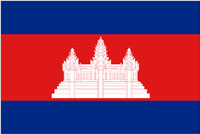 Phnom Penh, Cambodia
Phnom Penh, Cambodia
City population: 1,573,544
Main industries: Real estate, trading, tourism, garments, and service sector
National GDP (IMF, 2010, PPP): I$30.27 billion
National GDP Rank (IMF, 2010, PPP): 103/183
Mercer Quality of Living Rankings (2010): 190/221
Mercer Global Eco-City Rankings (2010): 158/221
Foreign Policy Global Cities Index (2010): Unranked
Xpatular.com’s Cost of Living Index (Oct. 2011): 298/300
Individual income tax rates: 0 percent – 20 percent
Local social expat web site: Cambodia Expat
Business reading: The Phnom Penh Post
Why it’s cool: Spilling inland from Vietnam’s east coast, Cambodia’s cheaper workforce is attracting high labor industries from across Asia.
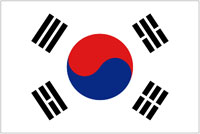 Seoul, South Korea
Seoul, South Korea
City population: 10,349,312
Main industries: Electronics, finance and banking, technology, auto manufacturing, service sector, and tourism
National GDP (IMF, 2010, PPP): I$1.47 trillion
National GDP Rank (IMF, 2010, PPP): 12/183
Mercer Quality of Living Rankings (2010): 81/221
Mercer Global Eco-City Rankings (2010): 93/221
Foreign Policy Global Cities Index (2010): 10/65
Xpatular.com’s Cost of Living Index (Oct. 2011): 29/300
Individual income tax rates: 6 percent – 35 percent
Local social expat web site: Korea4Expats
Business reading: The Seoul Times
Why it’s cool: A Western standard city on the front line, Korea’s auto and high-tech industries are world class.
 Singapore
Singapore
City population: 3,547,809
Main industries: Trade, finance and banking, tourism, service sector, foreign exchange trade, and logistics
National GDP (IMF, 2010, PPP): I$292.83 billion
National GDP Rank (IMF, 2010, PPP): 39/183
Mercer Quality of Living Rankings (2010): 28/221
Mercer Global Eco-City Rankings (2010): 22/221
Foreign Policy Global Cities Index (2010): 8/65
Xpatular.com’s Cost of Living Index (Oct. 2011): 22/300
Individual income tax rates: 0 percent – 20 percent
Local social expat web site: Singapore Expats
Business reading: The Straits Times
Why it’s cool: The financial center for Southeast Asia, with low taxes attracting everyone on all sides from China, ASEAN and India.
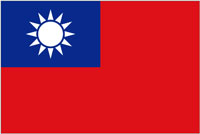 Taipei, Taiwan
Taipei, Taiwan
City population: 7,871,900
Main industries: Finance and banking, transportation, logistics industry, publishing, tourism, and service sector
National GDP (IMF, 2010, PPP): I$824.67 billion
National GDP Rank (IMF, 2010, PPP): 19/183
Mercer Quality of Living Rankings (2010): 85/221
Mercer Global Eco-City Rankings (2010): 124/221
Foreign Policy Global Cities Index (2010): 39/65
Xpatular.com’s Cost of Living Index (Oct. 2011): 69/300
Individual income tax rates: 5 percent – 40 percent
Local social expat web site: Taipei Life
Business reading: The Taipei Times
Why it’s cool: A microcosm of China, Taiwan is a great place to be re-introduced to Chinese culture, with a more international perspective among its population.
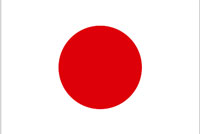 Tokyo, Japan
Tokyo, Japan
City population: 8,336,599
Main industries: Finance and banking, transportation, logistics industry, publishing, tourism, and service sector
National GDP (IMF, 2010, PPP): I$4.32 trillion
National GDP Rank (IMF, 2010, PPP): 3/183
Mercer Quality of Living Rankings (2010): 40/221
Mercer Global Eco-City Rankings (2010): 59/221
Foreign Policy Global Cities Index (2010): 3/65
Xpatular.com’s Cost of Living Index (Oct. 2011): 1/300
Individual income tax rates: 15 percent – 50 percent
Local social expat web site: Tokyo Expat World
Business reading: The Japan Times
Why it’s cool: Recovery from the Tsunami and the ensuing aftermath now underway, this high-end destination remains an expatriate delight, and especially so within financial services.
 Ulaanbaatar, Mongolia
Ulaanbaatar, Mongolia
City population: 844,818
Main industries: Tourism, mining, handicrafts, and electric power generation
National GDP (IMF, 2010, PPP): I$11.08 billion
National GDP Rank (IMF, 2010, PPP): 141/183
Mercer Quality of Living Rankings (2010): Unranked
Mercer Global Eco-City Rankings (2010): Unranked
Foreign Policy Global Cities Index (2010): Unranked
Xpatular.com’s Cost of Living Index (Oct. 2011): 266/300
Individual income tax rates: 15 percent – 20 percent
Local social expat web site: Mongol Expat; Mongolia Expat
Business reading: Mongolia Briefing
Why it’s cool: Wild, all about mining, yet growing wealthier by the minute, Mongolia’s 2.5 million nomads will be the first multi-millionaires of Siberia.
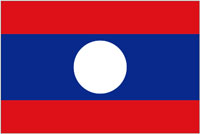 Vientiane, Laos
Vientiane, Laos
City population: 196,731
Main industries: Tourism, handicrafts, and trade
National GDP (IMF, 2010, PPP): I$15.77 billion
National GDP Rank (IMF, 2010, PPP): 129/183
Mercer Quality of Living Rankings (2010): 169/221
Mercer Global Eco-City Rankings (2010): 119/221
Foreign Policy Global Cities Index (2010): Unranked
Xpatular.com’s Cost of Living Index (Oct. 2011): 264/300
Individual income tax rates: 0 percent – 25 percent
Local social expat web site: Retire Asia – Vientiane
Business reading: The Vientiane Times
Why it’s cool: Laid back, yet charming, Vientiane offers much for the exploratory expatriate who speaks French and understands agriculture and off the trail tourism.
Summary
As China looks set to undergo a transition of relatively lower growth (7 percent annually over the next decade is projected), it also has to cater for an aging workforce. China’s workforce problem is in fact so severe that expatriates are now being seen as undesirable. Being a China expatriate is also becoming more expensive, and that will impact on the nature and quality of available positions. While this bodes poorly for the China career of many individuals, the good news is that alternative destinations right across Asia are booming. It may take some getting used to, but Mongolia currently has the world’s fastest GDP growth rates of some 30 per cent annually; while the expatriate population in the capital city of Ulaanbaatar is expected to reach 250,000 by 2016. Improved facilities and infrastructure will go hand in hand with that – and much will be provided by those same expatriates.
On the other hand, Southeast Asia is also seeing rapid growth. The success of Vietnam in terms of winning manufacturing business from China is already well understood, and is set to further increase. That is having additional impacts on locations such as Cambodia and even land-locked Laos, where the price of labor is lower still than in Hanoi. Labor intensive industries are already examining these options and many are putting down roots. India, meanwhile, is booming. And although the country is currently relatively expensive in terms of tax, it is about to go through tax reforms which should see these significantly reduced within the next two years. Cities such as Mumbai and Delhi are being reinvented as regional hubs, while Chennai and Bangalore are the new destinations for auto and IT, respectively. Meanwhile, we’ve included Moscow despite the fact it isn’t Asian – but it has very strong trade connections with Central Asia, China, and even Southeast Asia. These will only strengthen – Russia is about to join the WTO and we are all aware of how much that impacted upon China a decade ago. While it may be regrettable or even inconvenient for some that China careers may be coming to an end, the good thing is that Asia offers plenty of options. We look forward to seeing many of our China Briefing readers elsewhere in Asia over the next few years.
Chris Devonshire-Ellis is the principal and founding partner of Dezan Shira & Associates. He began the firm in China in 1992; it has now expended and has eleven offices across China, five in India, two in Vietnam and one each in Hong Kong and Singapore. Please contact the practice at asia@dezshira.com or visit the firm at www.dezshira.com.
Related Reading
 The China Alternative
The China Alternative
Our complete series on other manufacturing destinations in Asia that are now starting to compete with China in terms of labor costs, infrastructure and operational capacity.
 China’s Social Insurance Law
China’s Social Insurance Law
A summary of some of the key points in the newly implemented Social Insurance Law, which covers a great deal more than just incorporating foreigners into the system. We explain the costs and benefits of participation by foreign employees to both companies and individuals as well as take a look at some of the trends across the country relating to the implementation of the law.
 China’s Neighbors (Second Edition)
China’s Neighbors (Second Edition)
This unique book is an introductory study of all 14 of China’s neighbor countries: Afghanistan, Bhutan, India, Kazakhstan, Kyrgyzstan, Laos, Myanmar, Mongolia, Nepal, North Korea, Pakistan, Russia, Tajikistan and Vietnam.
Increased Expat Costs in China Will Relocate Many to India
- Previous Article China’s SAT Details VAT Reform Issues in Shanghai
- Next Article China’s Wine Market Shows Great Potential







